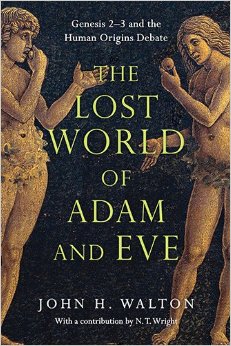Book Review: The Lost World of Adam and Eve
The Lost World of Adam and Eve:
Genesis 2-3 and the Human Origins Debate
by John H. Walton
Review by Mark T. Witwer
John Walton, Professor of Old Testament at Wheaton College and Graduate School, is first and foremost interested in the original meaning of the biblical text and determined to follow it where it leads: “If the Bible makes such claims that the evidence of history in the [human] genome needs to be denied…so be it.” Walton also pays careful attention to ways in which understanding the culture of the ancient Near East inform our understanding of the meaning of the text: “Biblical authority is tied inseparably to the author’s intention….That means that when we read Genesis, we are reading an ancient document and should begin by using only assumptions that would be appropriate for the ancient world.” Walton sees no conflict between these commitments: “Even in a Bible-first approach (in contrast to a science-first or even extrabiblical-first approach), we can be attentive to the ancient world or to modern science without compromising our convictions about the Bible.”
This book addresses the historicity of Adam and does so in a gracious and open-minded way. Walton’s position is moderate, affirming the historicity of Adam and Eve while stressing that the Bible does not insist they are the first humans. In his view, the Bible is less interested in whether they were the first human beings, or even in their historicity, than in their archetypal function as representatives of all people. He refuses to take a position on whether God used an evolutionary process to create humans, arguing that how God created us is not the Bible’s primary focus; such matters can be settled on their scientific merits.
The book is organized into twenty one chapters, each developing a proposition on which Walton’s position rests.
The first ten propositions develop the heart of Walton’s argument: the creation accounts in Genesis are not focused on “material origins,” about which the ancients had little interest. Instead, the accounts are about God establishing “order, functions and roles” and establishing “sacred space in the cosmos,” where God intended to be in relationship with people created in his image. Walton asserts, “It would not have been difficult for a reader from anywhere in the ancient Near East to take one quick look at the seven-day account and draw the conclusion that it was a temple story” and, “In the ancient world people were far more interested in the origins of the home [an ordered place for relationships] than in the origins of the house [the details of its structure].” Consistent with its lack of interest in material origins, the Bible’s primary interest in Adam and Eve is archetypal, not historical or scientific.
The next eleven propositions cover a range of topics that clarify Walton’s position and explore its implications. Topics covered include the historicity of Adam and Eve; the role of the garden, trees, and serpent in Eden; what happened when Adam and Eve sinned; his perspective on disorder (natural evil) in the world; the source of human sinfulness (not genetics); Paul’s use of Adam (which says nothing about Adam’s material origins); why humans are sinful (not something passed on genetically); why it is not essential that all humans descend from Adam and Eve; how humans may be considered special creations of God even if they have an evolutionary history (which history Walton neither endorses nor opposes). The section on Paul’s use of Adam contains a helpful excursus by N. T. Wright.
Walton’s position is a valuable contribution to conversations about Adam and about science and faith in general. Whether one agrees or disagrees with him, he demonstrates that the discussions need not be as polarized as they have become. The range of biblically and scientifically faithful options might be broader than some assume.

